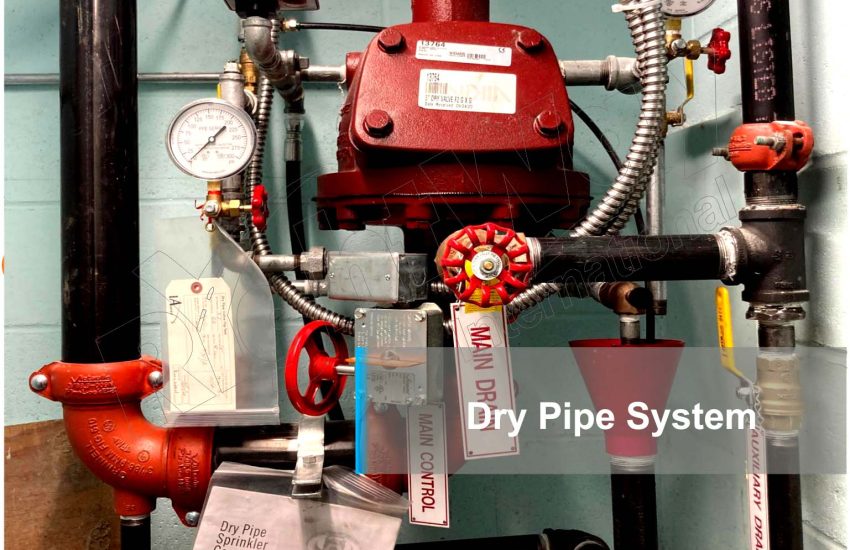Dry Pipe System are a crucial fire protection solution, especially in areas susceptible to freezing temperatures. Unlike wet pipe systems, which are filled with water at all times, dry pipe systems are filled with pressurized air or nitrogen, ensuring that water is only released when needed.
How Dry Pipe Systems Work
In a dry pipe system, the pipes are filled with compressed air. When a fire occurs, the heat from the flames causes the sprinkler heads to open, releasing the air pressure and allowing water to flow into the pipes. This design prevents water from being present in the pipes until it is absolutely necessary, reducing the risk of freezing.
Components of Dry Pipe Systems
- Sprinkler Heads: Similar to wet systems, dry pipe systems use sprinkler heads that activate when exposed to heat.
- Piping: The pipes, typically made of steel, carry the pressurized air and water when needed.
- Dry Pipe Valve: This critical component controls the flow of water into the system. When the air pressure drops due to an activated sprinkler, the valve opens to allow water in.
- Air Supply: A source of compressed air or nitrogen keeps the system pressurized, ensuring the pipes remain dry.
- Alarm System: Alerts occupants and emergency services when a sprinkler head activates.
Advantages of Dry Pipe Systems
- Freeze Protection: The primary advantage is the prevention of freezing, making them ideal for unheated buildings or areas with cold climates.
- Versatility: Suitable for a wide range of applications, including warehouses, parking garages, and other environments where temperatures may fluctuate.
Disadvantages
- Delayed Response: There can be a slight delay in water delivery since it takes time for water to fill the pipes after the air is released.
- Maintenance Needs: Dry pipe systems require regular maintenance to ensure the dry pipe valve and air supply are functioning correctly.
- Potential for Corrosion: The presence of moisture in the air can lead to corrosion within the pipes over time.
Installation Considerations
Installing a dry pipe system involves careful planning, including:
- Building Layout: Ensuring proper coverage and flow rates throughout the facility.
- Local Codes and Standards: Compliance with fire safety regulations is essential.
- Hydraulic Calculations: Engineers perform calculations to verify that the system can deliver adequate water pressure and flow when activated.
Maintenance
Regular maintenance is vital to ensure the reliability of dry pipe systems. Key tasks include:
- Routine Inspections: Checking the dry pipe valve, air supply, and piping for leaks or damage.
- Testing: Conducting tests to ensure the system activates properly and delivers water as intended.
- Drainage: Ensuring that any accumulated moisture in the system is drained to prevent corrosion.
Conclusion
Dry pipe fire sprinkler systems are an effective fire protection solution for environments at risk of freezing. By keeping pipes dry until a fire is detected, they provide reliable protection without the risk of ice blockages. However, regular maintenance and careful installation are essential to ensure their effectiveness. Understanding their unique features helps facility managers choose the right system for their fire safety needs.


